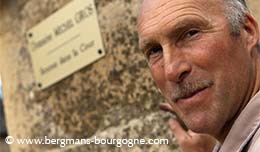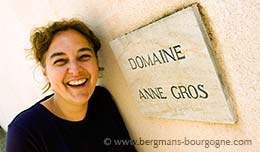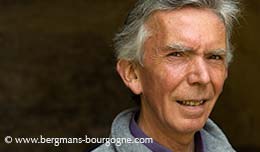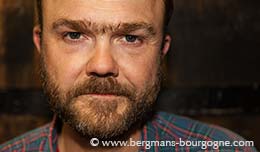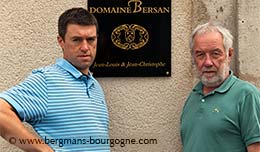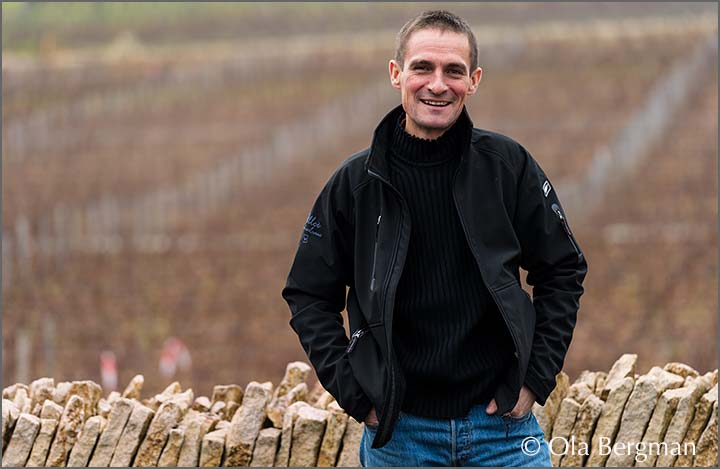
n 1994, with a new winery just finished down by the route nationale in Chassagne-Montrachet, Fernand Pillot said to his son Laurent ”From now on you will make the wine. I will stay in the vineyards”.
– I was 28, still young, says Laurent Pillot. For me it was a great opportunity, a great opportunity to learn and to improve. Working with the older generation can be good, but it can also put a lot of pressure on you.
 Today’s Domaine Fernand & Laurent Pillot has vineyards in eight villages in the Côte de Beaune, from Beaune to the north to Santenay to the south.
Today’s Domaine Fernand & Laurent Pillot has vineyards in eight villages in the Côte de Beaune, from Beaune to the north to Santenay to the south.
– Prior to my arrival at the domaine in 1988 my father had split the vineyards with his brother Jean, continues Laurent Pillot. At the time he had nine hectares of Chassagne-Montrachet, Puligny-Montrachet, Saint-Aubin and Santenay. I got married in 1989 and after four years we quickly had to take on the five hectares of Pommard vines of my wife’s family. In 2001 we took on other vines from my wife’s uncle, half of Domaine Pothier-Rieusset.
 Over slightly more than a decade Domaine Fernand & Laurent Pillot had doubled in size, from nine hectares to 18. At this point they decided to sell of some of the parcels in the regional appellations which were not up to par, shrinking the domaine to 14.8 hectares. About half the domaine is red, the rest white.
Over slightly more than a decade Domaine Fernand & Laurent Pillot had doubled in size, from nine hectares to 18. At this point they decided to sell of some of the parcels in the regional appellations which were not up to par, shrinking the domaine to 14.8 hectares. About half the domaine is red, the rest white.
– In the 1990s I was not very happy with my reds, says Laurent Pillot. I was expecting more from my Pommards. The concentration was not good enough. Eventually I decided to change quite a few things in the vineyards in order to lower the yields. Began de-budding, green harvesting, de-leafing etc.
 – My father had done a very good job in the vineyards, but it was the 1980s so the yields were still a bit high.
– My father had done a very good job in the vineyards, but it was the 1980s so the yields were still a bit high.
Altogether the domaine consists of 50 different parcels, distributed over 22 appellations. Focus is on Chassagne-Montrachet, where Laurent Pillot produces eight different cuvées – one red village appellation, one white village appellation, one red premier cru and five white premier crus.
– My white village Chassagne-Montrachet mainly comes from La Bergerie and Le Chêne, says Laurent Pillot. Le Chêne I have quite a lot of. It is a parcel just below La Maltroie. La Bergerie is a bit further north, closer to the village. There is a light débourbage and the wine sees between 20 and 25 per cent new oak.
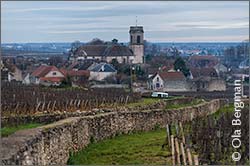 In Puligny-Montrachet the village wine comes from only one plot, Noyers Brets, which is to the immediate southwest of the village and just next to Les Enseignères. Fernand Pillot and his brother Jean bought one hectare there in the 1960s. It is hard to imagine today, but at the time they were the only ones interested in buying it.
In Puligny-Montrachet the village wine comes from only one plot, Noyers Brets, which is to the immediate southwest of the village and just next to Les Enseignères. Fernand Pillot and his brother Jean bought one hectare there in the 1960s. It is hard to imagine today, but at the time they were the only ones interested in buying it.
The five white Chassagne-Montrachet premier crus – Les Vergers, Les Champgains, Morgeot, Vide Bourse and Grandes Ruchottes – are located all around the village. Les Vergers is bordering on Saint-Aubin. Vide Bourse is the immediate east of Bâtard-Montrachet and very close to Puligny-Montrachet. The remaining three are all south of Chassagne-Montrachet.
 – My Morgeot is a blend from two parcels, Petit Clos and Les Boudriottes, says Laurent Pillot. Morgeot is a large part of the Chassagne-Montrachet vignoble. You may use the individual premier crus on the label, but you may also bottle them all as Morgeot. But Morgeot is not very homogenous. The upper part is good, but there are places in the lower part where there is a lot of clay, which can produce white wines that tend to be on the heavy side. Luckily all our vines are in the upper part.
– My Morgeot is a blend from two parcels, Petit Clos and Les Boudriottes, says Laurent Pillot. Morgeot is a large part of the Chassagne-Montrachet vignoble. You may use the individual premier crus on the label, but you may also bottle them all as Morgeot. But Morgeot is not very homogenous. The upper part is good, but there are places in the lower part where there is a lot of clay, which can produce white wines that tend to be on the heavy side. Luckily all our vines are in the upper part.
Further up the slope, in Grandes Ruchottes, is another of the domaine’s premier crus. This is a 37 ares parcel planted in 1973.
– Up there it is the SO4 rootstock. It is not used anymore. It is a vigorous rootstock variety, but not for long. Over a period of ten years it is very vigorous and then it changes. Our parcel was probably very high yielding in the 1970s, but now it produces very small, millerandées, berries.
 – Pierre Ramonet, the grandfather of Jean-Claude (who runs the illustrious Domaine Ramonet today) used to say his Ruchottes was better than his Bâtard-Montrachet. Later he would buy other parcels of Bâtard-Montrachet and Montrachet, but at Domaine Ramonet the Ruchottes is almost a mythical wine. It is a very nice part of Chassagne.
– Pierre Ramonet, the grandfather of Jean-Claude (who runs the illustrious Domaine Ramonet today) used to say his Ruchottes was better than his Bâtard-Montrachet. Later he would buy other parcels of Bâtard-Montrachet and Montrachet, but at Domaine Ramonet the Ruchottes is almost a mythical wine. It is a very nice part of Chassagne.
Vide Bourse is split between four owners. Domaine Fernand & Laurent Pillot owns a triangle which represents about one third of the whole surface area.
– Our vines almost touch the ones in Bâtard-Montrachet, smiles Laurent Pillot. The soil in Vide Bourse is similar to the one in Bâtard-Montrachet. Very well-draining. It’s a type of clay that doesn’t stick. Perfect soil really.
Outside Chassagne-Montrachet there are two white premier crus. Sentier du Clou in Saint-Aubin and Les Caillerets in Meursault.
– Most of the Meursault premier crus are located between Meursault and Puligny-Montrachet, says Laurent Pillot. Les Caillerets is on the Volnay side. Just next to it you have Volnay Les Caillerets. It is quite stony, but the stones are flatter than elsewhere. I’m not sure it is the original soil, because I’m on red soil and one of my neighbours is on white soil. My guess is that some of the soil has been brought there some time in the past.
– Les Caillerets is early-ripening. One really has to be careful there. Our first time there, in 2001, we arrived only to find pinkish grapes and grapes on the ground.
© 2016 Ola Bergman










